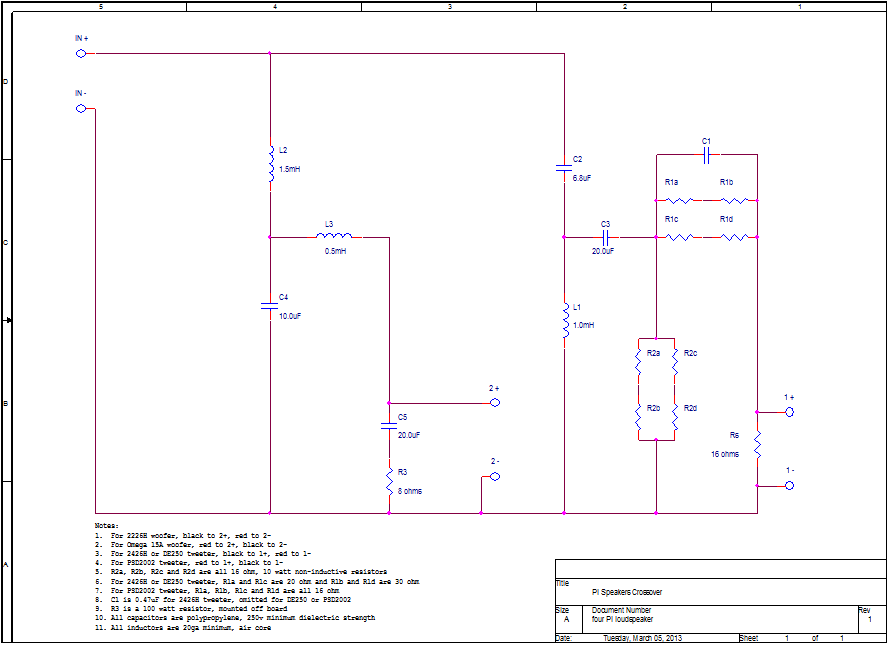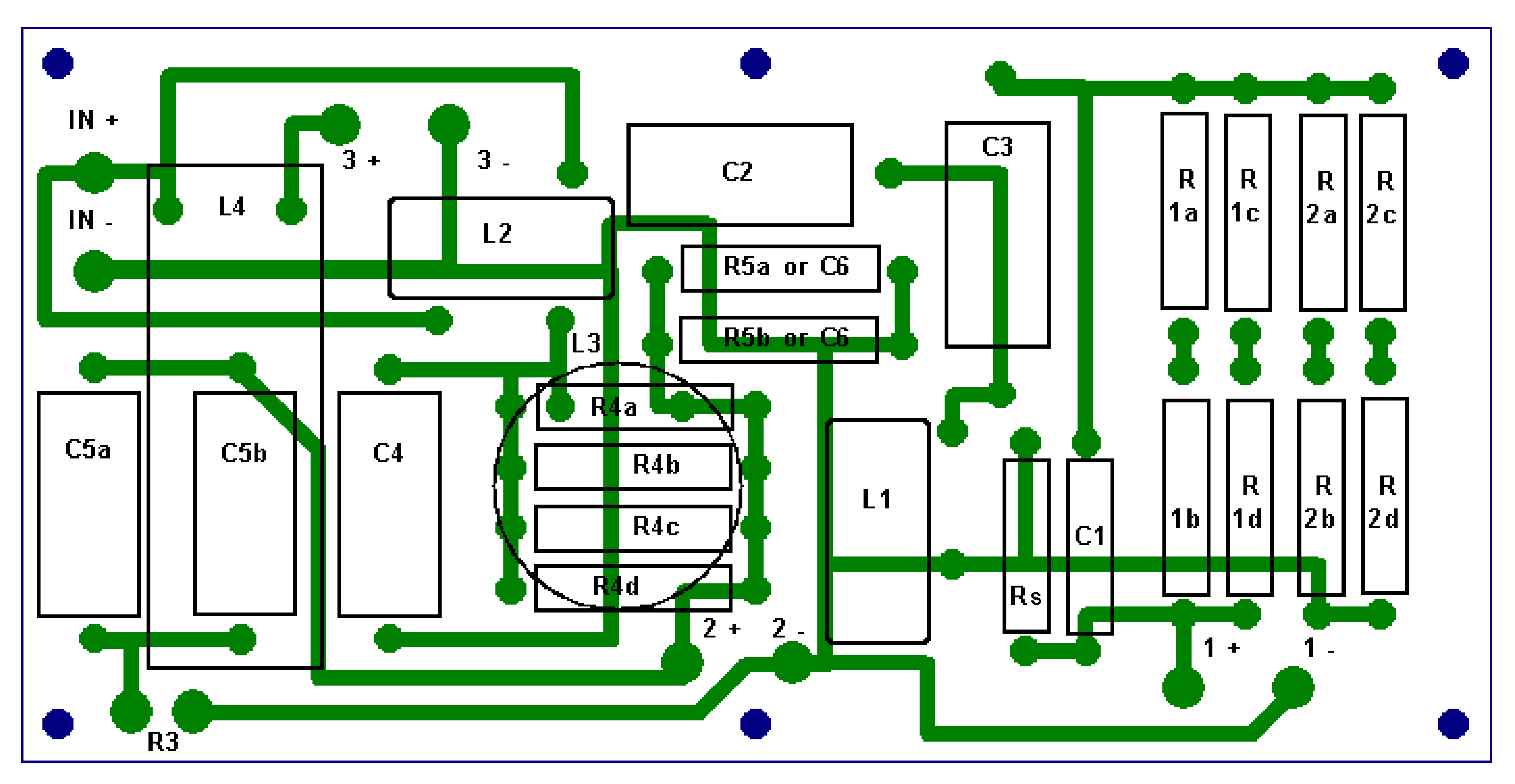| Re: Spice rules ;-) [message #51862 is a reply to message #51861] |
Wed, 27 February 2008 18:49  |
 |
 Wayne Parham
Wayne Parham
Messages: 18985
Registered: January 2001
|
Illuminati (33rd Degree) |
|
|
The difference is subtle. I did WTPro/ST models of various configurations and tested them. After I narrowed down to a few, I built actual physical models. As I said, the differences were subtle but definitely audible. I like the crossover shown below the best for the three π and four π speakers. I'll revisit other models as I have time and since all models with compression drivers have the same tweeter circuit, I expect that part will carry over.
Frankly, I've walked this road before (or one very much like it) when I made the versions of the crossovers I've been using the past few years. I made first, second and third-order crossovers, with various amounts of attenuation and HF compensation for the tweeter. First was a Spice model, then an actual physical model.
This time around, I did the same thing but I also added fourth-order networks. I had a little better visibility both because of the use of ZMA files and also because my acoustic measuring equipment is better. That's how I found a few small tweaks in the tweeter circuit that made a slightly better response curve. Decrease the value for C2 down to 6.8uF and increase L1 to 1.0mH. I also tried different slopes for each driver. I liked the 2nd/3rd arrangement and the pseudo-first-order circuit, but I liked the 3rd/3rd better. Going to 4th/3rd was too much. I also found that the Zobels didn't need to be as large as I was using. Although the difference is marginal, large capacitors are expensive (especially when using premium brands) so the smaller, the better. In the end, after lots of tests and listening sessions, the crossover I liked best is this:
 four π crossover
four π crossover
 π crossover PCB
π crossover PCB
|
|
|
|







